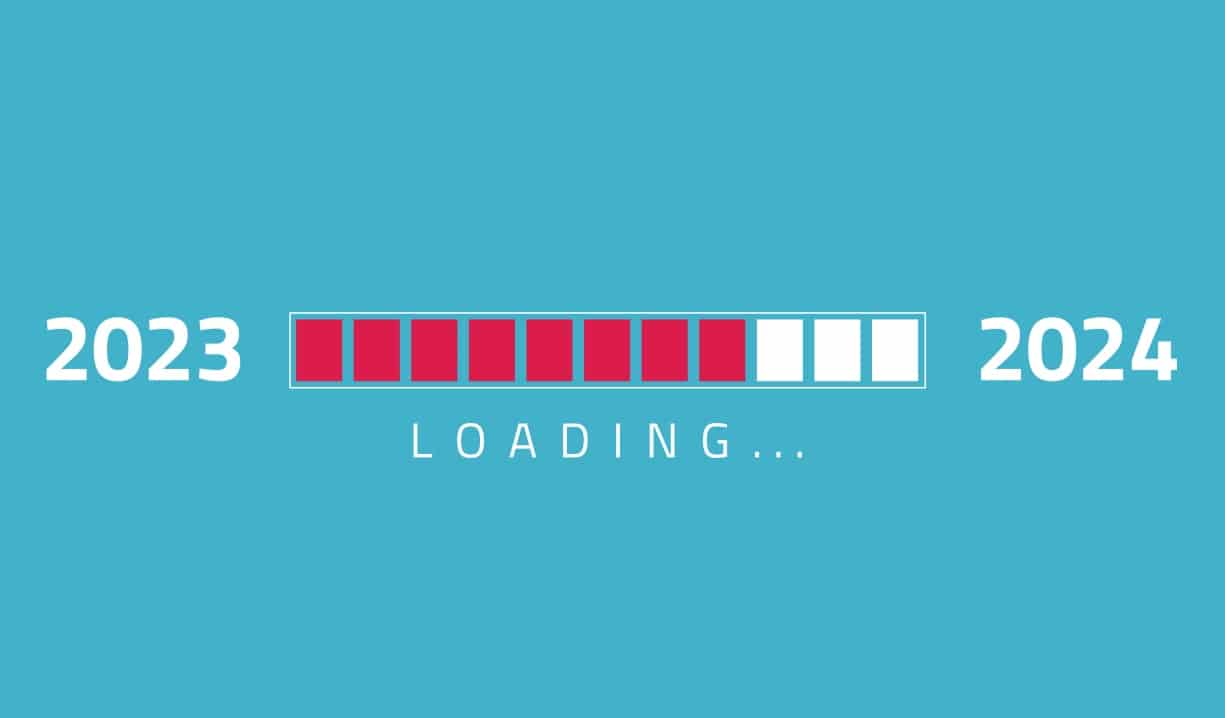There are many financial strategies to consider throughout the year with your financial advisor and tax accountant. By the end of the year, we know more about next year’s numbers, and we not only strategize for this year, but also the year to come. Making informed choices every year and small yet important adjustments will lead to greater wealth and less taxes paid in your lifetime and beyond.
Tax Deferred Contribution Limits for 2023 and 2024
Table of Contents
Contributing to a tax-deferred retirement account can reduce your taxable income. Contribution/deferral limits for 2024 have been announced by the IRS and can be seen in the chart below alongside 2023 limits. Take advantage of 2023 limits before year end and set up accounts to take advantage of 2024 deferral limits in the new year.
Does your employer match your contributions? Don’t leave money on the table. Make sure to contribute at least the amount that will maximize your employer’s contribution to your retirement account. If your employer doesn’t offer an employer sponsored plan, your traditional IRA contributions may be tax-deductible. The deduction may be limited if you or your spouse is covered by a retirement plan at work and your income exceeds certain levels.
*The limits in the chart below are for the total contributions you make each year to all of your traditional IRAs and Roth IRAs. There are no longer age limits on contributing to a traditional or Roth IRA. However, there are income limits that need to be met to contribute after-tax money to a Roth IRA and pre-tax money to a traditional IRA.
Health Savings Account contribution limits will also increase in 2024 for individuals and families. Learn to make the most of a Health Savings account.
There are various deadlines for contributions to the above accounts ranging from December 31st, 2023 to March 15th, 2024 to April 15th, 2024 to October 15th, 2024 (if the business has a tax-filing extension) to be coded as a 2023 contribution. Consult your plan administrator, your tax accountant, or the IRS site for accurate deadlines.
Roth Conversions
A Roth IRA conversion allows the transfer of some or all your retirement savings from a Traditional IRA, Rollover IRA, SEP-IRA, SIMPLE IRA, or 401(k) into a Roth IRA. There are no age limits to completing a Roth Conversion and also no income restrictions, as there are with contributing to a Roth IRA.
A conversion to a Roth IRA results in taxation of any untaxed amounts in the traditional IRA, like a normal IRA distribution. The assets, now in a Roth IRA, grow tax-free. Withdrawals after the age of 59.5 and the earnings after 5 years are also tax-free. The 5-year duration is calculated from the 1st day of the year you contribute/convert to your Roth IRA. Doing a conversion in December takes almost a year off the 5-year requirement.
Another reason the end of the year is a great time to consider doing a partial Roth Conversion is because you may have a better understanding of your annual income and hence where you fall in your tax bracket. Your tax accountant can help you calculate the amount to convert to stay within your tax bracket.
Down markets can present opportunities for Roth Conversions. In a down market, converting stocks that have been hit hard and that are expected to rebound is a strategy to consider. Simply put, you’ll pay tax on lower values now and benefit from potential tax-free gains in the future. A trusted financial advisor can help you identify these stocks and process the conversion. Converted amounts are taxable in the same year and it is optimal when there is available cash outside these accounts to cover the taxes.
Charitable Giving Deductions for 2023 and 2024
How do you like to give? Here are a few giving strategies that have tax-saving advantages, making your contribution to your favorite charity doubly rewarding.
Donations to charities, as defined by the IRS, are tax-deductible and can lower your taxable income in the year the donation was made. It is important to ensure that any charitable giving meets IRS substantiation rules when itemizing your contributions as deductions. The IRS has announced that the standard deductions for taxpayers will go up in 2023. See chart below.
Consider “batching” your donations every few years to maximize using the standard deduction in the years when you don’t itemize. This can be done in conjunction with consolidating non-emergency visits to doctors and dentists.
“Give away the gain” – Gifting shares of stock that have appreciated significantly from the time you bought them to a qualified organization, can avoid incurring tax on capital gains (if the security were to be sold and the gain realized).
Gifting highly appreciated assets from taxable accounts to a Donor Advised Fund (DAF), is also a way to secure a charitable deduction in 2023 and avoid capital gains. Once the assets are in a DAF, you can watch them grow tax-free and give them to qualified charities in future years. The year in which you transfer assets to a DAF is the year you can lower your tax burden. Therefore, consider this strategy in years with high income.
Another tax-saving way to give is through Qualified Charitable Distributions (QCD). Individuals 70.5 years old and older can perform IRA charitable rollovers and directly transfer up to a total combined of $105,000 (up from $100,000 in 2023) from their IRA(s) to qualified charities. Taxes are neither withheld nor incurred for QCD distributions and the amount can be used to offset Required Minimum Distributions (RMD), reducing Adjusted Gross Income (AGI).
The deadline for charitable giving is Dec 31st, 2023, to claim a tax deduction for 2023. December 1st is the recommended date to initiate gifts of qualified, appreciated stock or wire transfers and IRA charitable rollovers/QCD.
Gifting Limits for 2023 and 2024
The annual gifting limit will be going up again next year. This year (2023), individuals can give up to $17,000 per person without eating into their lifetime estate- and gift-tax exemption. In 2024, the annual gifting limit will be $18,000 per recipient. These numbers are doubled if you are married.
To fund the specific goal of contributing to a young child’s future educational expenses, you can make contributions to a 529 plan as a gift. When markets are low and children are young, could be the ideal time to increase contributions to 529 accounts. Furthermore, individuals are allowed to contribute up to 5 years’ worth upfront to a 529 plan without incurring the annual gift tax.
Tax Loss Harvesting
Although we do not recommend selling good investments for tax purposes only, tax loss harvesting can be a useful tool at the end of the year to avoid some or all capital gains tax within a taxable account.
Selling securities at a loss can offset realized gain from other sales. In addition, if your capital losses exceed your capital gains, the amount of the excess loss that you can claim to lower your income is the lesser of $3,000 ($1,500 if married filing separately) or your total net loss. If your net capital loss is more than this limit, you can carry the loss forward to later years.
It is important to be aware of the wash sales rules. The IRS won’t let you claim the loss if you sell the stock, and within 30 days or less you buy a “substantially similar” stock in any of your or your spouses’ accounts. After 30 days, you are allowed to buy the same or similar stock back and still account for the loss.
Tax Loss Harvesting can be especially useful for taxable accounts in periods of market volatility. A trusted financial advisor can help you identify the securities to sell to realize a loss, identify the securities to reinvest the proceeds in, and avoid wash sales in the process.
Seek Advice
These limits and laws change frequently, and your life and financial situation might change just as often. To sort through these end of year strategies, find a trusted financial advisor who will work closely with your tax accountant to determine what important adjustments can be made to grow your financial well-being this year and for your family in years to come.
Learn more about our financial planning services, or schedule a meeting with a wealth advisor.
Sources:
https://www.irs.gov/taxtopics/tc409
https://www.schwab.com/learn/story/year-end-portfolio-checkup-5-tax-smart-tips
https://www.irs.gov/retirement-plans/plan-participant-employee/retirement-topics-ira-contribution-limits
https://www.irs.gov/retirement-plans/plan-participant-employee/retirement-topics-401k-and-profit-sharing-plan-contribution-limits
https://www.irs.gov/retirement-plans/retirement-plans-faqs-regarding-iras
https://www.irs.gov/newsroom/401k-limit-increases-to-23000-for-2024-ira-limit-rises-to-7000
https://www.irs.gov/newsroom/irs-provides-tax-inflation-adjustments-for-tax-year-2023
https://www.irs.gov/retirement-plans/retirement-plans-faqs-regarding-iras-distributions-withdrawals







